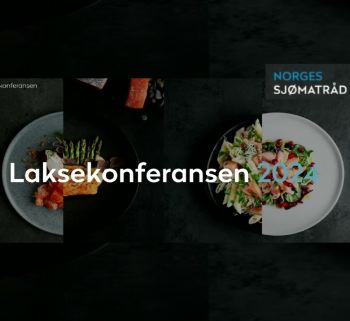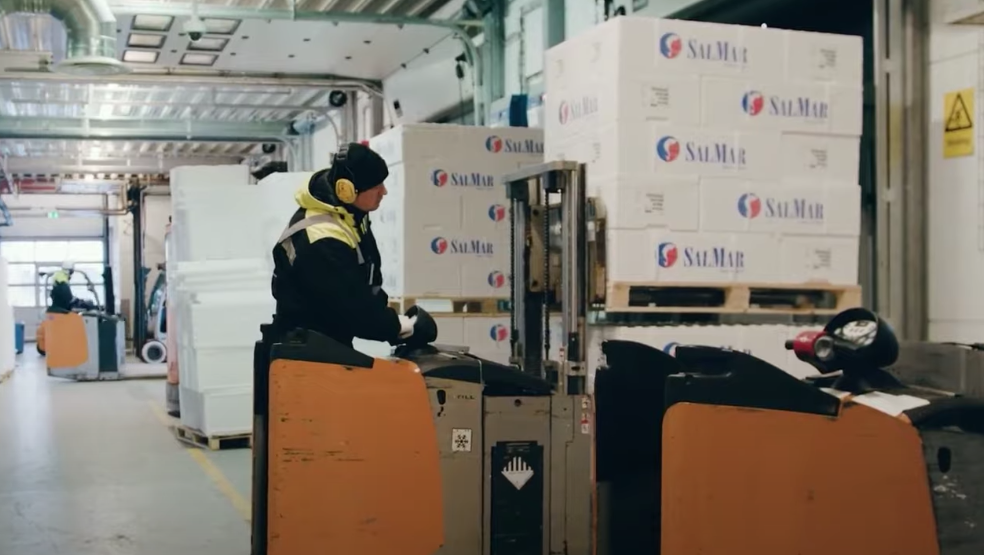|

Photo: Norwegian Seafood Council/FIS
This is how SalMar works to solve today's challenges in the salmon industry
 NORWAY
NORWAY
Tuesday, July 16, 2024, 01:00 (GMT + 9)
SalMar wants to increase knowledge about salmon biology. They will spend NOK 500 million on establishing the Salmon Living Lab, in order to improve and develop the entire food chain.
"Through collaboration with other actors and more basic research, the "Salmon Living Lab" will contribute to providing the world with healthy and sustainable seafood. At the same time, we need to look at the salmon's sustainability, fish welfare and how we utilize both the sea and the input factors even better," said executive director of SalMar, Frode Arntsen, at the Seafood Council's salmon conference in Bergen in June.

Photo: Henrik Kaslegard, Seafood Council
The time has come to acknowledge the challenges
In the last 3–4 years, global demand for salmon has increased, while production in Norway has stagnated.
"Salmon production has become a high-tech industry that has succeeded with a number of good solutions and brought us forward. There are, however, other factors that have developed in the wrong direction. Both the feed factor, the proportion of damaged fish and the mortality rate have increased. Now is the time to acknowledge the challenges and increase knowledge of salmon biology", Arntsen said from the stage.
Interaction between critics and researchers
To contribute to this, SalMar has launched the "Salmon Living Lab" initiative. There should be an interaction between critics and researchers, and should contribute to reversing the negative development linked to biological challenges in salmon production.
.png)
Photo: Seafood Council/YouTube
" 'Salmon Living Lab' will close knowledge gaps, search for new insights and attract partners with leading industry expertise. Now we are working to find out how to organize ourselves", said Frode Arntsen.
Over 100 stakeholders have signed up
- How much potential do you see in this project?
"We believe that the potential in terms of growth, survival and improved health for the salmon is great. In addition, we have high expectations for nutrition and the combination of biology and technology".

Photo: Henrik Kaslegard, Seafood Council
Must be an innovation center
"We need leading knowledge in the entire value chain, right from genetics to the final product. We want to create an innovation center to improve and develop the food chain in salmon farming. Some of the results will be public, while some will be more company-specific", he explained.
Like most aquaculture companies, SalMar also experienced a number of production challenges last winter.

Photo: Seafood Council/YouTube
Demanding winter in the localities
"We have had several localities that have been heavily attacked by jellyfish. Together with low sea temperatures in northern Norway, ulcer bacteria and the highest proportion of production fish of all time, it has been demanding, Arntsen acknowledged from the stage", before quickly adding:
"In times like this, it is extra important to remind each other that we have a fantastic product and thus a very good starting point. Although the earth consists of 70 percent water, only three percent of all food production comes from the sea. The UN has also pointed to sustainable aquaculture as a key measure to be able to feed the world's growing population, so the potential is great".

Photo: Seafood Council/YouTube
Well-equipped for sustainable growth
SalMar aims to produce around 360,000 tonnes over a three-year period, which in that case would be a growth of 35 percent compared to 2023.
"We at Salmar will work to improve the entire value chain, create even better sustainability and create even better salmon and even better fish welfare. Then together with all good forces, and not least the Seafood Council, we will get help to get this product out into the world in the coming years as well", said Frode Arntsen.
FACTS
SalMar
- Founded in 1991
- The world's second-largest producer of salmon
- Delivers salmon to more than 50 countries
- Estimated slaughter volume this year: 277,500 tonnes
Source: Norwegian Seafood Council (translated from original in Norwegian)
[email protected]
www.seafood.media
|



